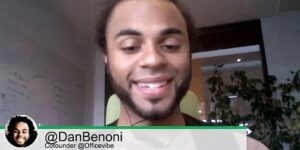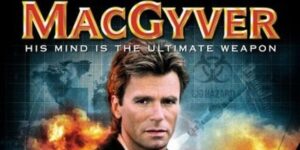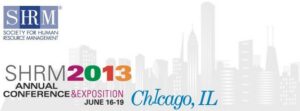
Fun Times! Work, Games and Culture #TChat Recap
Engagement is the fruit of ongoing relationships and healthy workplace cultures. How can gamification help?

Engagement is the fruit of ongoing relationships and healthy workplace cultures. How can gamification help?

When you’re filling open positions, it’s wise to pay attention to all job seekers — even if they aren’t a fit. Here are 4 reasons why — and tips to help

Does “fun” fit into your vision of the ideal workplace? Are game-based models really effective at driving employee engagement? Let’s talk about it with several business culture innovators

The world of work is growing more complex and interesting all the time. Who are tomorrow’s leaders and how can they prepare today? Our community speaks…

Is Gen X really the “forgotten generation”? If so, what does that mean as the next wave of leaders must step in to lead the world of work?

Want loyalty and engagement from your employees? If you’re a leader, the best place to look for solutions may be in your own leadership style

What if we felt free to express emotions like anger, fear, depression and grief in the workplace? Could that kind of authenticity lead to better business results?

Trust is essential to business success — and it’s a two-way street. How can leaders create a trust-based culture? A young entrepreneur weighs in

In today’s world of work, shift happens. The defining question for leaders is how will you make the most of those dynamics?

Negative performance feedback is tricky to give and receive — but hiding the message doesn’t help. Try these 5 ideas for a more satisfying outcome

Do you want your organization to behave in a more collaborative way? For better results, try taking some cues from nature.

Evidence shows that we don’t need to be super-human to be ingenious. We just have to be willing to try. Here’s what the TalentCulture community thinks…

Employers are on a mission to reignite passion and productivity in the workplace. How can they make that happen with existing talent?

Why is social learning suddenly such a hot business issue? Consider three fundamental facts…

Does your organization have extraordinary contributors who need to be led in a special way? How can you motivate them to perform at their peak, for the benefit of all?

Grand as it may be, today’s “always on” connectivity experiment is taking a toll, and business leaders are just starting to respond. But how can we help ourselves?

Research confirms that employees are suffering at the hands of poor managers — and business performance is right behind. How can companies turn this around?

Finding the next superstar employee can be a challenge. It can start by hiring solid interns, since they often move to full-time positions. But what traits should you look for?

Customer and employee engagement are similar in many ways. Here’s how customer experience disconnects can inspire better employee communications…

How can organizations encourage collaboration? And why does it matter? The TalentCulture community opens up about open leadership…

How can we create a more engaging experience for tomorrow’s workforce? And what do today’s graduates see ahead in their careers? We’ll explore this and more, LIVE at SHRM13. Join us!

What does a future-ready workforce look like? Business collaboration and learning expert Dan Pontefract says it features a special kind of leader

Small-company culture can be highly attractive to top talent. So, what can large companies do level the playing field? Try these 5 steps…

How can organizations engage employees more constructively? Start with the basics — 3 essential ways to build stronger connections

In a week devoted to workplace recognition, our community discovered an abundance of ways to express appreciation. But above all, be sure to make it meaningful.